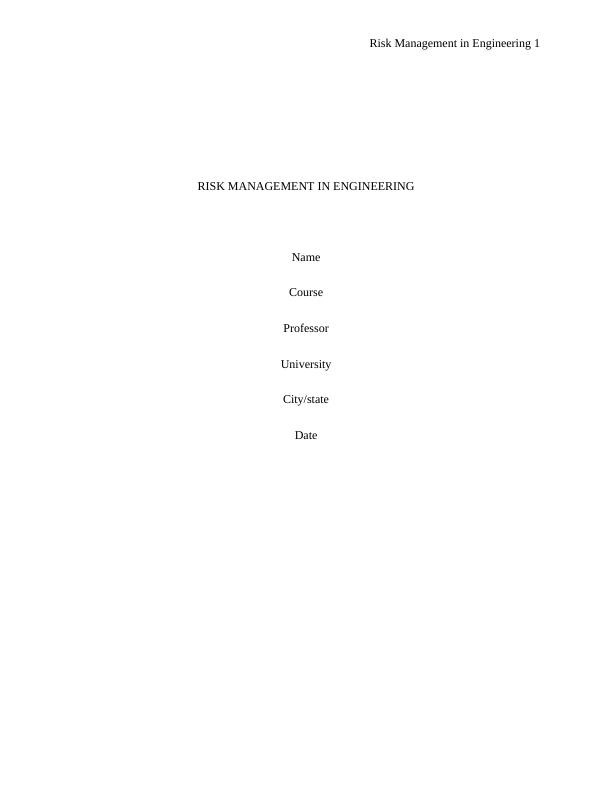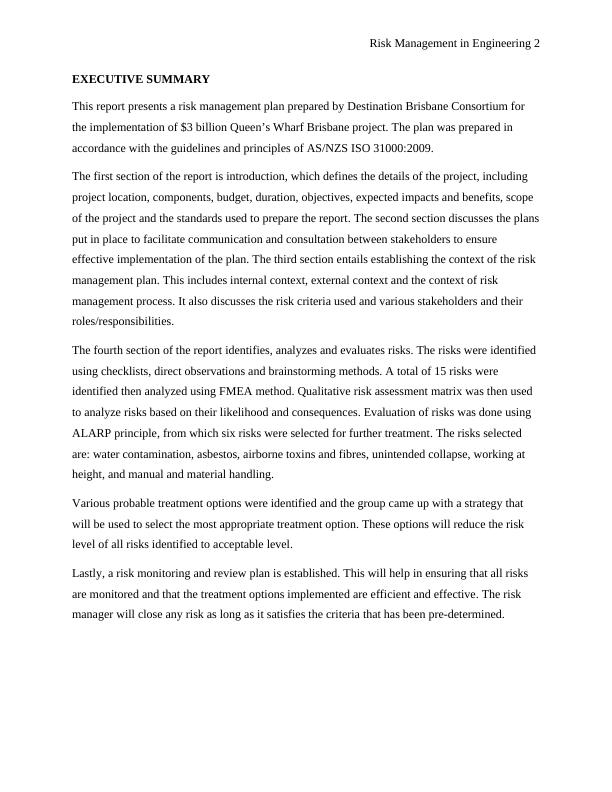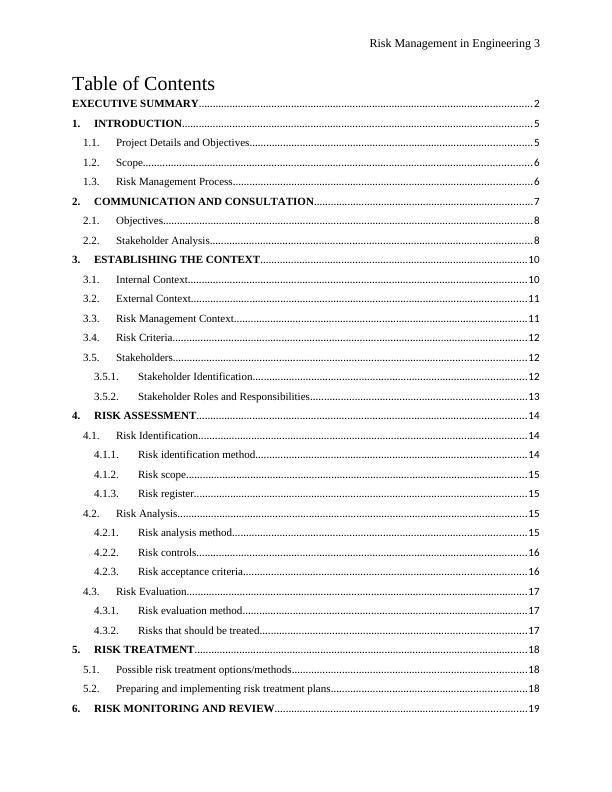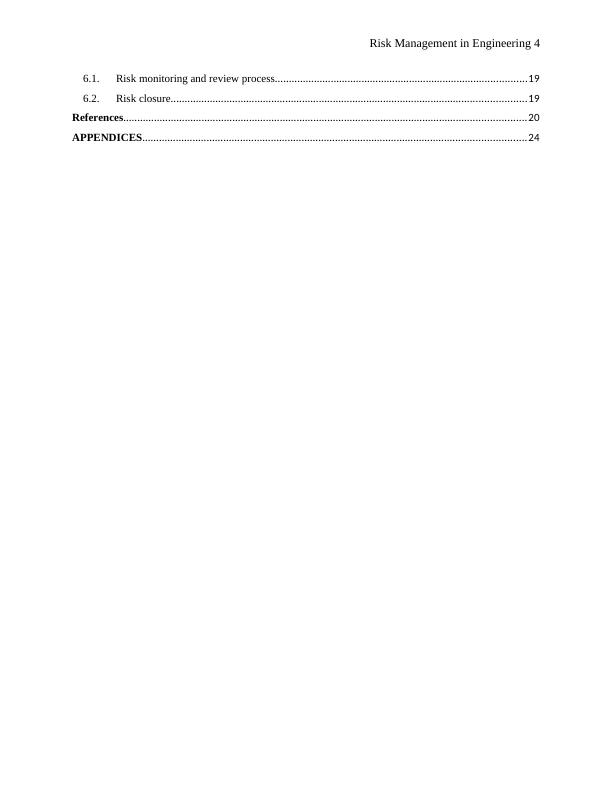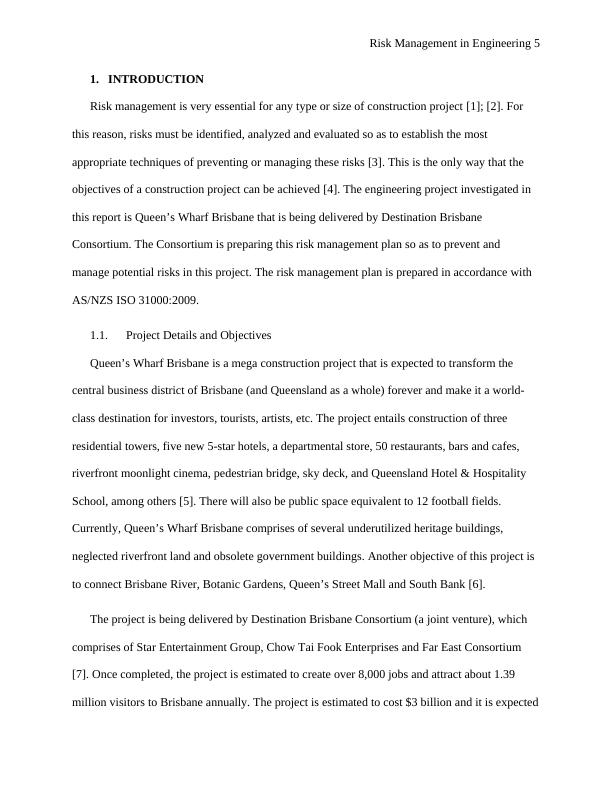Risk Management Plan for Queen’s Wharf Brisbane Project
Prepare a risk management plan for a risk problem in an engineering environment, using AS/NZS ISO 31000:2009 and SA/SNZ HB 436 as guidelines. The plan should include a literature review, consideration of alternatives for risk management, and clearly state the risk tolerability criteria employed.
30 Pages6433 Words454 Views
Added on 2023-06-13
About This Document
This report presents a risk management plan prepared by Destination Brisbane Consortium for the implementation of $3 billion Queen’s Wharf Brisbane project. The plan was prepared in accordance with the guidelines and principles of AS/NZS ISO 31000:2009. The report includes introduction, communication and consultation, establishing the context, risk assessment, risk treatment, and risk monitoring and review. The report focuses on construction risks with particular attention on occupational and public health and safety.
Risk Management Plan for Queen’s Wharf Brisbane Project
Prepare a risk management plan for a risk problem in an engineering environment, using AS/NZS ISO 31000:2009 and SA/SNZ HB 436 as guidelines. The plan should include a literature review, consideration of alternatives for risk management, and clearly state the risk tolerability criteria employed.
Added on 2023-06-13
ShareRelated Documents
End of preview
Want to access all the pages? Upload your documents or become a member.
Risk Management Plan for Brisbane Quarter Project
|23
|5968
|323
RISK MANAGEMENT PLAN FOR THE PROJECT ON A HIGH SPEAK TRANSPORT SERVICE FROM Brisbane TO Melbourne
|22
|4981
|493
FIN 4232 - Risk Management Plan Of Fukushima Daiichi
|32
|7268
|118
Risk Management Plan for Water Infrastructure Project in South Australia
|23
|6064
|281
Risk Management for Leather Manufacturing Industry
|32
|5522
|454
Assignment on Manage Risk Business
|36
|8286
|40

